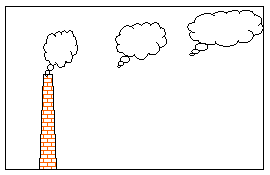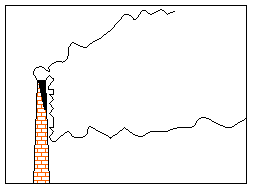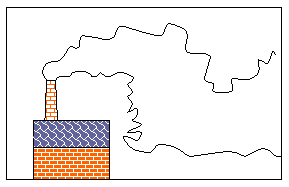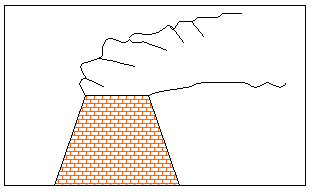| Less Commonly Described Plume Phenomena |
| |
|
The plume shapes shown above are the ones most commonly described in basic textbooks. However there are a number of phenomena that are also important.
|
| Thermalling |
 |
|
This typically occurs on a summer afternoon when thermals are well developed (cumulus clouds will be visible). The plume is carried about by the thermals and broken into separate lumps.
|
| Flagging |
 |
|
When the efflux velocity is not large enough to carry away the effluent from the chimney some effluent is entrained into the wake of the stack. This is brought down to lower level and pollutes the ground space near to the chimney. The smoke often blackens the upper part of the stack.
|
| Downdraughting |
|
Here the plume gets caught in the wake of a building. Correct chimney heights should minimise this effect.
|
 |
| Puffing |
|
This is most commonly seen with quite wide stacks. Thermal energy causes the upper part of the plume to break away slightly. This indicates that thermal energy in the plume is greater than it needs to be for optimum plume rise.
|
 |



